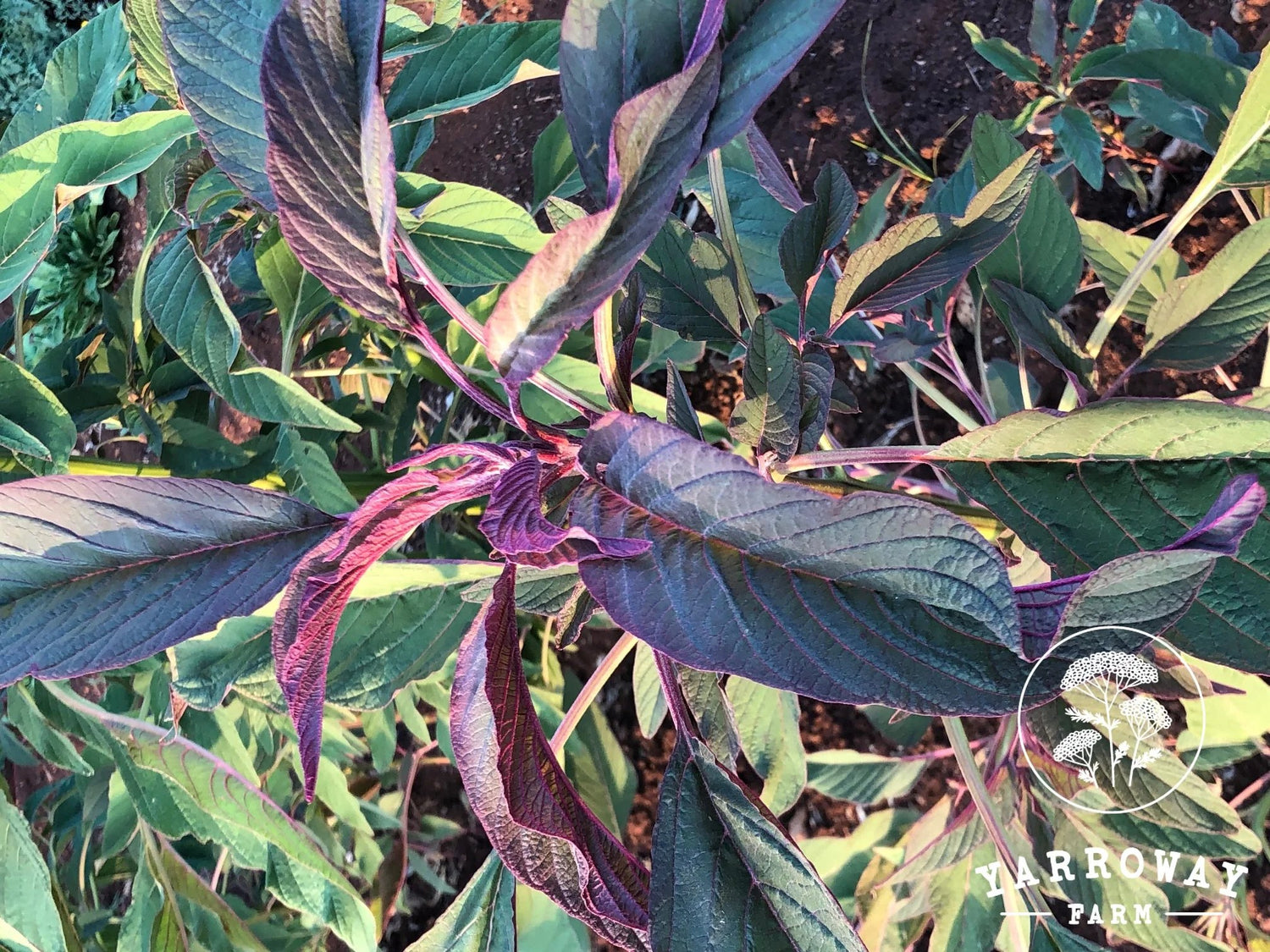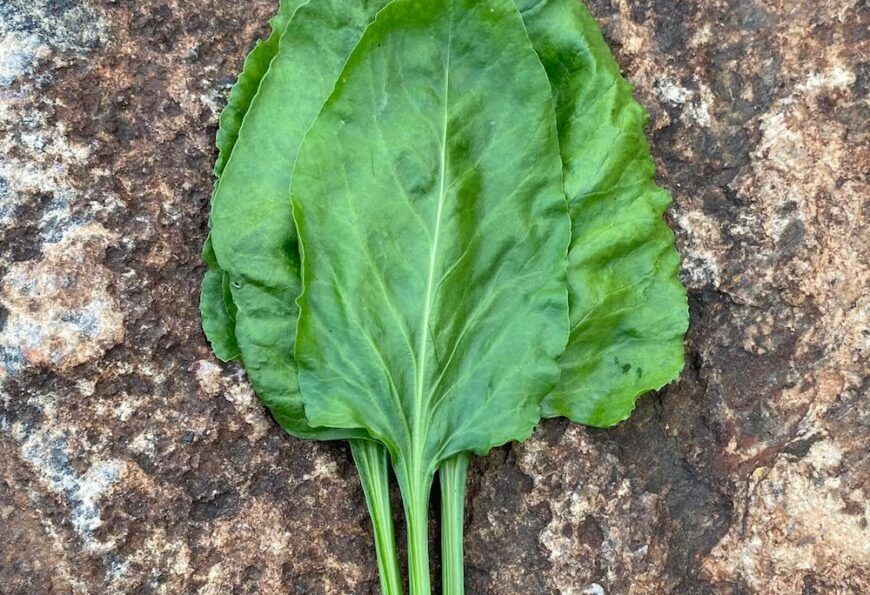SPINACH
Spinach is generally a cool weather crop and can bolt easily in the summer heat. Can be eaten raw (especially in young/baby stage), and cooked.
Sowing Style: Direct sow outdoors, 1cm deep in furrows and cover carefully with compost. Spinach is prone to bolting if it is transplanted. It’s a fast growing crop that is ready in 30-40 days. Sow every 10-15 days for a continuous crop.
Time to Sow: Autumn when the nights start getting cooler and all through Winter. If you would like to grow Spinach all year round, make sure you pick a partially shaded cooler area with good clayish soil and a good irrigation system.
Plant Spacing: 3-4” for harvesting young greens. Thin out the seedlings to 8-12” if you want big mature bunches.
Good Companions: Beets, Cabbage, Cauliflower, Celery, Eggplant, Garlic, Peas, Radish, Arugula, Squash, Strawberry
Bad Companions: None
Soil and Cultivation Requirements: Spinach likes good soil that drains well but retains moisture. The leaves are prone to get tears in them if attacked by pests or birds. Cover the crop with plastic netting to protect the tender leaves in such a situation. When the soil lacks nutrition or there is too much crowding, the leaves tend to get spots on them. Use good compost during sowing, and once between the harvests.
Irrigation: Spinach prefers sprinkler irrigation. In dry weather, spinach requires diligent watering.
Harvesting and Storing: Harvest as a cut and come again crop until hot weather arrives. Pinch the leaves off so that you don’t disturb the roots by tugging at them. When harvesting the leaves, only take a few from each plant at a time to avoid sapping the plants strength. Spinach does not store for long and wilts very quickly, especially during sunny or dry days. Therefore fresh harvests and immediate consumption is recommended. If you harvest during a hot day, make sure you dip them in cool water and dry them in a cool shaded place before consuming, refrigerating, or shipping it locally.
MALABAR SPINACH: Belongs to a different family and grows as a perennial. It needs a permanent spot next to a trellis. Grows in all seasons and gives abundant spinach all through the year. Very low maintenance and does not demand high nutrition or regular irrigation.
AMARANTHUS AND CELOSIA
Overall, they are warm weather crops. Fills all the nutrition needs in the dry hot months and rainy season, when most green struggle to grow. Below notes are for growing this crops for their greens. They thrive in full sun and will grow to be 5 to 8 feet tall in ideal conditions. Once plants become well established, they will be able to out-compete weeds.
Sowing Style: Direct Sow. Broadcast or line sow in furrows. Thin as required.
Time to Sow: Monsoon and Summer is the best time. They have stunted growth and low germination in cooler months.
Plant Spacing: 3-8”.
Good Companions: Carrot, Radish, Beets, Potato, Onions, Corn, Pepper, Eggplant
Bad Companions: Tomatoes
Soil and Cultivation Requirements: Easy to grow, these plants grow best in moist, well-drained soil, but they will tolerate poor soil quality and drought. Leaves are prone to get tears in them if attacked by pests or birds. Cover the crop with plastic netting to protect them.
Irrigation: Sprinkler irrigation works well for this crop. The crop does not demand much water and pretty low maintenance.
Harvesting and Storing: Pinch the greens and sub-stems from the bottom first, going upwards. Never cut off the top portion, because that will stop the plant from growing. Pull the plant out entirely if it’s coming to seed, so it doesn’t sap energy out of other plants. When harvesting the leaves and stems, only take a few from each plant at a time to avoid sapping the plants strength. They wilt quickly, so dip in cold water and dry them before storing or shipping.
GONGURA / AMBADI / ROSELLE
A versatile all season crop. They like warm weather and fill the nutrition needs in the dry hot months and rainy season, when most green struggle to grow. Will stay in your plot for a long time and make a beautiful hedge with red and white flowers. The leaves of a Red and Green Gongura plant are used as traditional food in Andhra, Telangana, and Maharashtrians cuisines in chutneys, pickles, dals and meat. Roselle on the other hand is from the same family, but produces beautiful large red calyxes, that are dried to make an antioxidant rich tea or other beverages. Mostly grown for the flowers.
Sowing Style: Direct Sow. Broadcast or line sow in furrows as a hedge. Thin as required. They need enough room to grow so find a spacious spot for them.
Time to Sow: Monsoon and Summer are best time to sow. Although we have seen them do well all year long.
Plant Spacing: 12-24”
Soil and Cultivation Requirements: Easy to grow, these plants grow best in moist, well-drained soil, but they will tolerate poor soil quality and drought.
Irrigation: They can grow purely rain fed, except in summer. Sprinker irrigation will work for Gongura, however we suggest gentle soil watering or drip irrigation for Roselle since you are focusing on harvesting the calyxes.
Harvesting and Storing: Harvest the leaves and calyxes fresh from the plant. Never cut off the top portion, because that will stop the plant from growing. When harvesting the leaves and stems, only take a few from each plant at a time to avoid sapping the plants strength. The leaves wilt slowly and store well.
The Roselle clayxes need to be air dried well for 5-7 days and will store well in jars for a year.
METHI & CORIANDER
The essential winter greens. They thrive in cool weather and the winter sun. Too much heat makes them bolt and come to seed quickly. The best time to enjoy their rich foliage with minimum bitterness is in the autumn and winter months. If you plan to grow them in warmer months, make sure that you find a cool semi-shaded spot where the soil does not dry out easily.
Sowing Style: Direct Sow. Broadcast or line sow in furrows. Thin as required.
Time to Sow: Autumn and Winter months are the best time to sow them to enjoy their rich foliage with minimum bitterness. Sow they every 15-20 days for continuous harvest of greens.
Plant Spacing: 6-8”
Soil and Cultivation Requirements: Rich soil and a sunny well drained site. Use good compost during sowing, and after each harvest. The more nutrition you provide intermittently after harvests, the more foliage you will get.
Irrigation: Sprinkler irrigation is recommended. The plants need regular light watering during the day.
Harvesting and Storing:
Harvest twice or more times as a cut and come again. Pinch the leaves off so that you don’t disturb the roots by tugging at them. When harvesting the leaves, only take a few outer leaves from each plant at a time to avoid sapping the plants strength. Corriander can be harvested even after the flowers start showing up, but Methi tends to get bitter of you wait that long and need to be harvested much earlier. Fresh harvests and immediate consumption is recommended. If you harvest during a hot day, make sure you dip them in cool water and dry them in a cool shaded place before consuming, refrigerating, or shipping it locally.


